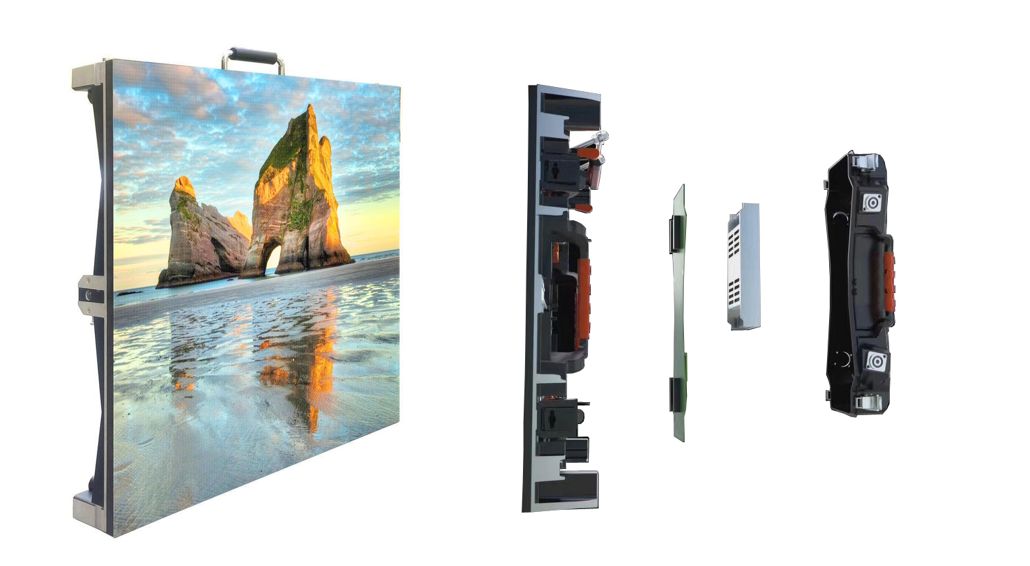The first set of 802.11ac chips is coming, but 802.11n may still exist for many years, whether it is for business or home use. However, the 300Mbps (megabits per second) promised by the n standard is rarely realized, and it has proved to cause huge bottlenecks for 50 / 100Mbps broadband connections, 1080p video streaming, and large-scale backups. On the enterprise side, some trivial tasks (such as remote desktop or real-time collaboration) are affected by poor Wi-Fi connections. In our tests, we often see such results: through 802.11n connection, the speed of the device only a few meters apart (only one wall in the middle) will drop to only 2-15Mbps, here is the problem you will encounter: A * 0.5-2 Mbps: For this speed, it is enough for you to cope with all basic chat and mail services, but it will be slower when loading some rich websites. A * 4-5 Mbps: enough to handle all websites and basic video streams A * 20+ Mbps: This is the minimum speed required for HD streaming. A typical bit rate of 720p iTunes TV shows is 2-6Mbps, and your router needs to compensate to other connected clients and pre-buffer. A * 50+ Mbps: Can support 1080p movies and over-the-air backup. If you hate such a slow Wi-Fi speed, but do not want to go back to Ethernet, we provide you with some tips to increase the speed. 1. Check the ecological settings of your router Some routers are set to "power saving" mode by default, with the goal of saving a few milliwatts. However, this commendable method will reduce the bandwidth accordingly. Although my trusted Linksys WRT610N router is not set to this unnecessary power saving mode, I adjusted it to the power saving mode to see the impact on bandwidth. If you value bandwidth more than saving a few milliwatts, then check your router's settings, find options called "transmit power" or various Eco modes, and turn them off. In addition, check if your router has certain "automatic" transmission settings turned on, and you should turn them off. 2. Overcome the laws of physics Sometimes, the laws of physics also affect wireless bandwidth and signal strength. First, the distance between your router and wireless adapter has a greater impact on network speed than you might think. There is a rule of thumb here: as long as the distance between the router and the client is doubled, the throughput will drop to one-third of the original value. A wireless repeater (which may cost between $ 20-100) will significantly increase your signal strength. In addition to distance, other wireless signal killers include objects and elements that affect throughput, namely water and metals. Water will block the 2.42GHz signal, so you'd better take away all objects in your home or office that contain any form of liquid (this includes radiators and flower pots, this is no joke!). At the same time, make sure that there is no metal between the router and the client, such as metal furniture and metal plates, high-tech equipment, etc. Remember, smooth and shiny surfaces reflect signals, which affects signal strength. 3. Upgrade your router's antenna Packet loss and weaker throughput are usually caused by poor antenna design. The good news is that you can use a more powerful antenna to replace the built-in antenna in the router. This is a bit troublesome, but it will make you notice the difference between slow connection and fast connection to the router. Depending on your settings, you can choose an omnidirectional antenna or a directional antenna (most devices in a room if you need good throughput). 4. Find the best place to put the router Use wireless thermal imaging tools to measure the effect of distance, frequency change, and building structure on signal strength. Two recommended tools are NetSpot (for Mac) and Heatmapper (for Windows), both of which can help you track your office. Or the wireless coverage of the home. In our test, we will show you how NetSpot works: After installing this software, enter the new name in "Site Survey" and then click "Blank Map". You can also choose a floor plan of your home or office to get a more accurate map. If you want to be more creative, I suggest you choose the "Draw Map" function and start drawing your own floor plan. Next, determine the exact distance between the two locations, click "Let's get started", then go to a point and click your current location on the floor plan: Obviously, the more points you scan, the more accurate your wireless heat map. After completing these steps, you will get a map showing the signal strength and the throughput of the wireless network. 5. Different CPU frequencies and their impact on wireless signals Your computer motherboard also runs on the "Gigahertz" spectrum, and this "noise" will be detected by the built-in wireless transmitter. Unfortunately, the higher the noise, the more likely your wireless router will automatically reduce the bandwidth (by reducing the link rate and avoiding frequency interference). Since the current CPU frequency is dynamic, the wireless adapter needs to constantly adapt to the link rate, which will not only cause changes in Mbps, but may also cause disconnection. Especially on laptops, the wireless adapter is usually built in next to the memory and CPU bus, which is the main source of the problem. Of course, it all depends on the design of your wireless adapter, but if the above symptoms are exactly the problem you are facing, you may need to configure an external adapter to solve the problem. Some adapters (such as Linksys adapters) will have a bracket connected by a long USB cable. In this way, it will be helpful to open the distance between the wireless adapter and the CPU noise. Of course, this method is not very convenient when you are working outside, but it is a feasible method when you use it at home. Typical wireless adapters (such as Linksys AE2500, 802.11n dual-band) or MSI US310EX are very easy to use. 6. Firmware or driver problems A simple but often forgotten suggestion is: make sure your router firmware is the latest version, especially when you buy a new router. Through the first few firmware updates, it is expected that the bandwidth, feature set, and signal resiliency will be improved. (My Linksys only provides full bandwidth to the living room after the update). In addition, please make sure that the wireless adapter (whether external or internal) is always up to date. After upgrading to the next version of the adapter driver, the problems of standby and low performance will be resolved. Although the drivers delivered through Windows Update have become better in recent years, they rarely provide you with the latest and best drivers. You can do this: The first place to check for updates is the manufacturer ’s support page. But if their driver field is not well maintained, you can go to the chipset manufacturer's website. We often see chipsets for wireless adapters being acquired and then adopting new brand names. For example, our Linksys WUSB 600N adapter uses the RT2870 chipset produced by the Taiwanese manufacturer Ralink. Therefore, it is a smart approach to go directly to the chipset manufacturer's website to find the update program. Check their support / download page, enter your email address, and then get the driver. If you want to know what chipset you are using, you can check the specification sheet of the wireless adapter. 7. Choose the right channel After your router is set up, it will automatically detect the least crowded channel and then set it as the default channel. However, with the emergence of new neighbors or offices, this situation may change rapidly: Suddenly, a certain channel will be occupied by many routers, while other channels are unused. InSSIDer can help you solve this problem: this tool will analyze the entire wireless spectrum, and then provide you with details of the home network and channel usage. I was surprised to find that I was sharing channel 1 with four other routers. This is not the optimal situation. Because channel 9 was not used, I switched to this channel instead, which helped me significantly improve latency and throughput. 8. Use your router's 5GHz network The 2.4GHz frequency is crowded, not only because neighbors use the same frequency, but also baby monitors, cordless phones, microwave ovens, and so on. Modern 802.11n routers provide "dual frequency", which means they send two network signals: one at 2.4GHz and one at 5GHz, which is not crowded at all and provides more channels. So why don't we jump to 5GHz and enjoy a less crowded and faster wireless frequency? Unfortunately, many device manufacturers believe that they should save costs on wireless chips, and only choose the 2.4GHz receiver, which includes all portable game consoles, as well as many Android phones, all Apple iOS devices and Windows Phones. My suggestion is: activate both networks at the same time and connect the mobile device to the 2.4GHz network. Enable 5GHz network for your laptop and desktop. 9. Limit the frequency band of your router Sometimes, you have no way to choose the 5GHz band or choose an "uncrowded" channel. In this case, you can limit your router to send signals at 20MHz intervals. Although this may reduce the overall throughput, it will Give you a stronger signal. 10. Test connection There are many wireless monitoring tools that can measure the solutions given above. However, the most accurate tool is iPerf. This tool has a client on the laptop or PC you want to measure, and then a server tool on the PC to connect directly to the router. After deploying analyzers on both ends, you will know your wireless speed. My suggestion is: In your home or office, test the wireless speed of the router and the client at different locations, and the thermal image will point you to the best location.
LED rental screen is a kind of Led Display
screen specially used for mobile stage performance and artistic activity
performance, with rich display content and all-weather use ability, which is
more and more widely used. The LED rental display screen is generally designed
as a custom-made die-casting aluminum box, which is light and thin, quick
disassembly and convenient transportation, suitable for different areas of
application places. It can be processed synchronously and asynchronously, and
can accept the access of DV, VGA, dhmi, SDI video, 4K signal, composite yuy and
other new signal sources. Video, picture and text can be played at will.
Mobile Led Screen features:
1. The light, thin and fast lock design of
the box body enables quick disassembly and assembly during use. It is equipped
with an aircraft box, safe and convenient transportation. The box body can be
equipped with arc lock and rotate the lock at ± 15 ° to meet the use
requirements of customers for different sites.
2.
Signal source: support any direction of signal source, meet the arrangement and
placement of different boxes, and create different effects and pictures.
3.
Levelness: the box body adopts die-casting aluminum structure, with high
precision, good flatness and no shadow.
4. The screen body is equipped with a video
processor, which can delay AV, VGA, DVI, HDMI, SDI and other signal sources to
achieve full screen, split screen, picture in picture, live broadcast and other
effects.
6.
Heat dissipation effect: the box is made of aluminum material, which does not
need built-in fan air conditioner, etc. to reduce the power consumption of the
box and work more quietly.
7.
cabinet size: now it is mainly used for LED rental panel box size of 500 * 1000mm,
500 * 500mm, 576mm * 575mm, 512mm * 512mm480 * 480mm and other standard
boxes.
Application scenario: widely use stage
rental, press conference, stadium, 4S point, sales center, lecture hall,
multimedia video, hotel, conference room, etc.
Precautions:
the screen body is divided into indoor and outdoor, indoor screen body shall
not be exposed to rain, edges and corners shall not be collided, and shall be
handled gently.
Indoor Led Screen,Mobile Led Display,Led Display,Led Screen Shenzhen Vision Display Technology Co,.LTD , https://www.ledvdi.com

